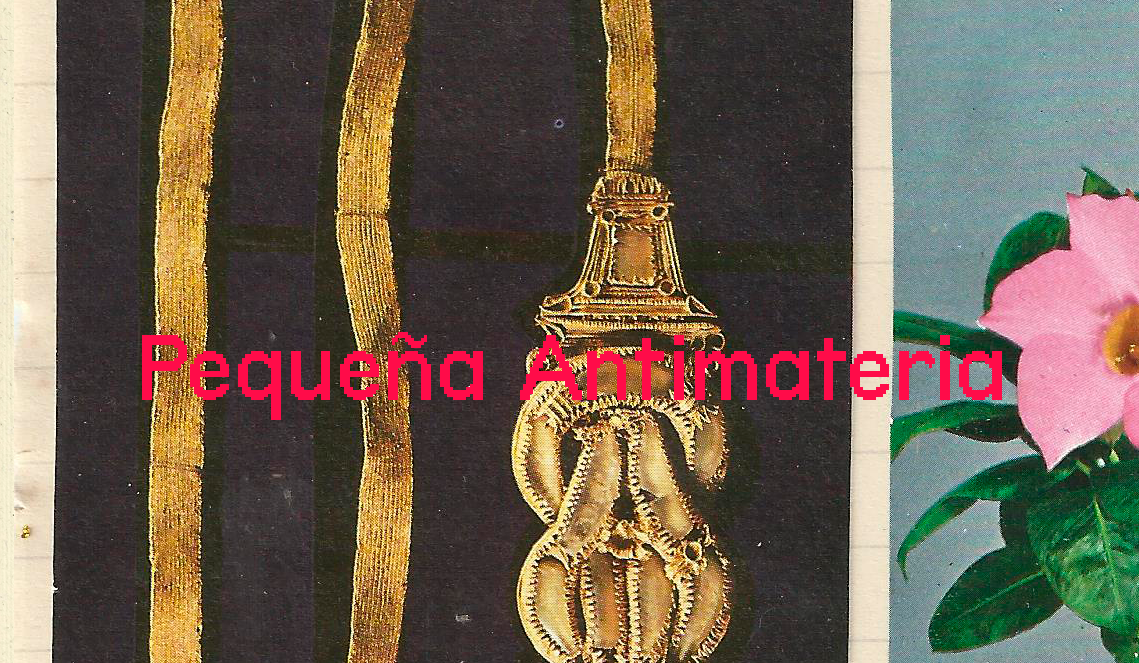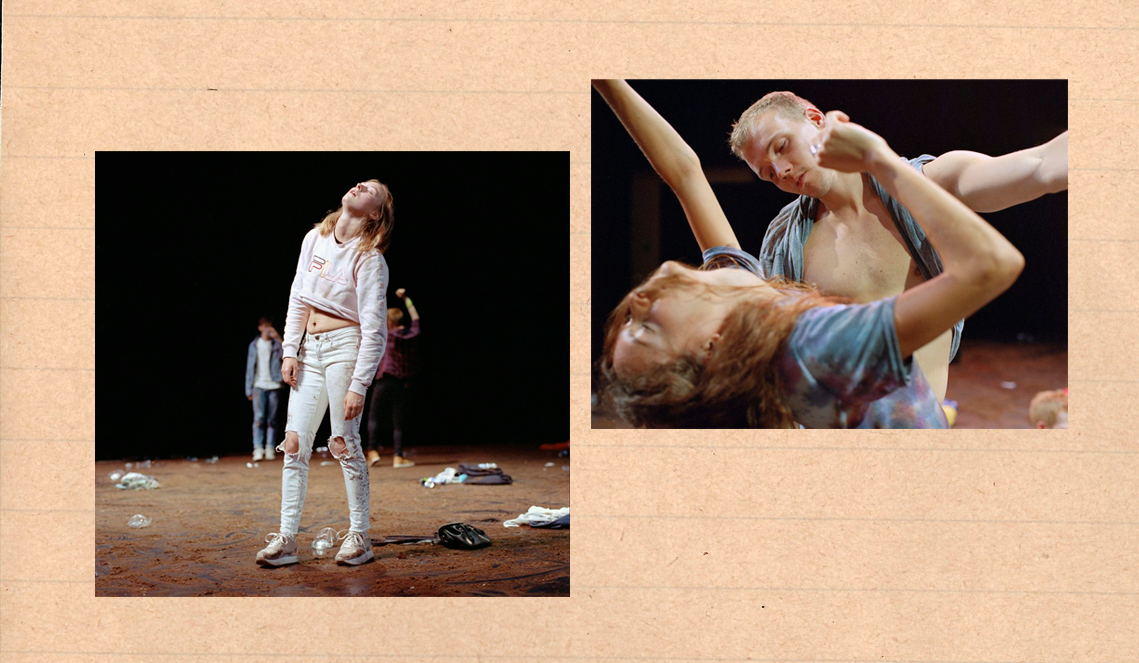
Welcome back, queridos lectores.
Si estáis ávidos de voces diferentes, personas chisporroteantes y nuevos ítems, permaneced atentxs a las próximas Pequeñas Antimaterias: recomendaciones fantásticas os aguardan.
Esta semana tenemos la suerte de leer a Almudena Ávalos, una periodista brillante y poderosa. Ella pertenece a una generación de mujeres periodistas que lleva años construyendo un asidero alentador, estimulante y emancipador para muchas de nosotras. Gracias <3
Welcome back, dears.
If you're eager for different voices, sparkling personalities, and new items, stay tuned for the upcoming Pequeña Antimaterias because fantastic recommendations await you. This week, we're fortunate to read Almudena Ávalos, a brilliant and powerful journalist. She belongs to a generation of women journalists who have been building an encouraging, stimulating, and emancipatory foothold for many of us for years.
Thank you <3
Si estáis ávidos de voces diferentes, personas chisporroteantes y nuevos ítems, permaneced atentxs a las próximas Pequeñas Antimaterias: recomendaciones fantásticas os aguardan.
Esta semana tenemos la suerte de leer a Almudena Ávalos, una periodista brillante y poderosa. Ella pertenece a una generación de mujeres periodistas que lleva años construyendo un asidero alentador, estimulante y emancipador para muchas de nosotras. Gracias <3
Welcome back, dears.
If you're eager for different voices, sparkling personalities, and new items, stay tuned for the upcoming Pequeña Antimaterias because fantastic recommendations await you. This week, we're fortunate to read Almudena Ávalos, a brilliant and powerful journalist. She belongs to a generation of women journalists who have been building an encouraging, stimulating, and emancipatory foothold for many of us for years.
Thank you <3

Almudena Ávalos se dedica al periodismo de cultura y gastronómico desde hace dos décadas. Ha escrito para medios como The Washington Post o El País Semanal, entre otros. Fue editora de cultura en los inicios de la revista S Moda; directora de difusión y mediación cultural en Naves Matadero–Centro Internacional de Artes Vivas (Madrid) y, desde hace un año, dirige EL PAÍS Gastro.
En 2009, la editorial Torremozas la seleccionó como una de las voces nuevas de la poesía en castellano y, desde entonces, de vez en cuando (como hoy) promete terminar su primer poemario.
instagram.com/avalosalmudena/
Almudena Ávalos has been dedicated to cultural and gastronomic journalism for two decades. She has written for publications such as The Washington Post and El País Semanal, among others. She was the culture editor at the beginning of S Moda magazine; director of dissemination and cultural mediation at Naves Matadero–Centro Internacional de Artes Vivas (Madrid); and for the past year, she has been directing EL PAÍS Gastro.
In 2009, the Torremozas publishing house selected her as one of the new voices in Spanish poetry, and since then, from time to time (like today), she promises to finish her first poetry collection


ITEM #1: Gisèle Vienne
La primera pieza escénica de la artista Gisèle Vienne que vi me dejó en la butaca sin pestañear. Fue Crowd, y en ella el dolor, la rabia y el deseo se mostraban en el cuerpo de unos bailarines, que se movían a cámara lenta en una rave iluminada como esas madrugadas que transforman el destino. Esas que no quieres que nunca terminen.
Lo mismo me sucedió con la última obra de Vienne, Extra Life, con música de otra diosa, Caterina Barbieri, y Adèle Haenel sobre el escenario. Extra Life es una continuación de aquella rave, con algo de diálogo verbal y una iluminación que podría funcionar como una instalación independiente. Tanto Crowd como Extra Life siguen de gira y aquí su agenda:
https://www.g-v.fr/en/agenda/
https://www.g-v.fr/en/shows/extra-life/
https://www.instagram.com/reel/CvxfphAIdxy/
https://www.youtube.com/watch?v=qEuP0t0sHsk
The first stage piece by artist Gisèle Vienne that I saw left me glued to my seat without blinking. It was 'Crowd,' where pain, rage, and desire were displayed through the bodies of dancers, moving in slow motion in a rave illuminated like those early morning hours that transform destiny. Those that you never want to end.
The same happened with Vienne's latest work, 'Extra Life,' featuring music by another goddess, Caterina Barbieri, and Adèle Haenel on stage. 'Extra Life' is a continuation of that rave, with some verbal dialogue and lighting that could function as an independent installation. Both 'Crowd' and 'Extra Life' are still on tour, and check the schedule on the links above.

ITEM #2 Begoña M. Rueda
Desde que descubrí en la adolescencia a Peri Rossi, Pizarnik o Juarroz (a los que sigo leyendo compulsivamente) no había encontrado otra poeta que me tocara de esta manera, hasta que en 2021 di con Begoña M. Rueda y con su poesía cruda y directa a la herida. Begoña nació en Jaén en 1992 y trabajaba en el servicio de lavandería de un hospital público de Algeciras cuando le pilló el covid. De ahí salió su poemario Servicio de Lavandería, con el que ganó el Premio de Poesía Hiperión 2021 y un hueco en el lado más oscuro de mi corazón.
En este poemario dice cosas como:
Sé a qué huelen los enfermos
antes de fallecer,
sé que algunos se peinan, se afeitan,
y se empapan de Varón Dandy
como si morir
no consistiera sino en dar otro de muchos paseos
los domingos por la mañana.
In my teenage years, I discovered Peri Rossi, Pizarnik, or Juarroz (whom I continue compulsively reading), I hadn't found another poet who touched me in this way until I came across Begoña M. Rueda in 2021 with her raw and direct-to-the-wound poetry. Begoña was born in Jaén in 1992 and worked in the laundry service of a public hospital in Algeciras when she caught COVID-19. From there came her poetry collection 'Servicio de Lavandería' (Laundry Service), with which she won the Hiperión Poetry Prize 2021 and found a place in the darkest corner of my heart.
In this collection, she says things like:
'I know what the sick smell like before they die, I know that some comb their hair, shave, and drench themselves in Varón Dandy as if dying was nothing more than taking another of many walks on Sunday mornings.

ITEM 03 Un mundo de Ángeles Santos
Un mundo, de Ángeles Santos, no es solo un cuadro. Es la manera en la que una chavala de 18 años explicó su mundo en 1929 con óleos y pinceles, y desde una habitación de Valladolid. Antes que Leonora Carrington, antes que Remedios Varo y antes de que naciera la madre de Tim Burton, ella reflejó en un lienzo de tres metros por tres metros, lo que veía, soñaba e imaginaba. Hay mujeres con antorchas que encienden estrellas, un mar con bañistas, un crimen, extraterrestres que tocan instrumentos, teatros, exposiciones, un desfile fúnebre, ángeles, una mujer llorando frente a la tumba de Stendhal y muchas cosas más, porque este cuadro podría ser un cómic o el storyboard de una película que nunca termina.
Para quien se lo encuentra sin saber nada de él, puede ser más misterioso que las mujeres del manuscrito de Voynich, pero para mí, es el lugar que busco cuando no me encuentro. Está en el segundo piso del Reina Sofía, lo cambiaron hace poco de sitio y lo distanciaron de La Tertulia, otro cuadro mítico de la pintora donde, también con 18 años, retrató un grupo de tertulianas en el salón de una casa (y que contrasta con La tertulia -masculina- del Café de Pombo, de Gutiérrez-Solana). Además de estar en las paredes del museo, se puede ver en su web, y ampliar y ampliar para descubrir pequeños detalles que la pintora quiso inmortalizar. Si lo haces, puedes encontrar la escena de su posterior cuadro La tertulia dentro de los salones de uno de los edificios. Porque Un mundo no es un cuadro, ni un cómic, ni un storyboard, sino una película que nunca termina.
“Un mundo" by Ángeles Santos is not just a painting. It's the way an 18-year-old girl explained her world in 1929, from a room in Valladolid. Before Leonora Carrington, before Remedios Varo, and before Tim Burton's mother was born, she depicted on a three-meter by three-meter canvas what she saw, dreamed, and imagined. There are women with torches lighting stars, a sea with bathers, a crime, UFOs playing instruments, theaters, exhibitions, a funeral procession, angels, a woman crying in front of Stendhal's tomb, and many more things because this painting could be a comic or the storyboard of a never-ending movie.
For someone who encounters it without knowing anything about it, it may be more mysterious than the women in the Voynich manuscript, but for me, it is the place I seek when I can't find myself. It's on the second floor of the Reina Sofía, they recently moved it and distanced it from "La Tertulia," another mythical painting by the artist where, also at 18, she portrayed a group of salon attendees in a house (in contrast with "La tertulia" - masculine - of Café de Pombo, by Gutiérrez-Solana). Besides being on the museum's walls, you can see it on its website and zoom in to discover small details that the painter wanted to immortalize. If you do so, you can find the scene from her later painting "La tertulia" within the halls of one of the buildings. Because "Un mundo" is not just a painting, a comic, or a storyboard, but a movie that never ends.

ITEM 04 Torta tradicional china rellena de verduras y panceta
Además de los minutejos (sandwiches finitos de oreja laminada con salsa picante, que un señor registró con ese nombre en 1964 en el madrileño barrio de Carabanchel porque "una oreja son sesenta minutejos") hay otro bocado que me quita todos los males. Es una torta tradicional china rellena de verduras y panceta que hacen en un horno de piedra, en un local del número 59 de la calle Nicolás Sánchez, en Usera. Cuesta 2,50 euros, hay que pedir la crujiente con relleno grande y tomársela en las mesas del bar con los vecinos del barrio: primera y segunda generación de migrantes chinos. Para ver el horno y cómo las hacen, hay que acercarse a su cocina, pedir permiso para echar un vistazo por fuera, meter la cabeza y husmear.
......
In addition to "los minutejos" (thin sandwiches of sliced ear with spicy sauce, which a man trademarked with that name in 1964 in the Madrid neighborhood of Carabanchel because "one ear is sixty 'minutejos'"), there is another bite that cures all woes for me. It's a traditional Chinese pancake filled with vegetables and bacon, baked in a stone oven, at 59 Nicolás Sánchez Street, in Usera. It costs 2.50 euros; you have to order the crispy one with a large filling and enjoy it at the bar tables with the neighborhood residents: first and second-generation Chinese migrants. To see the oven and how they make it, you have to approach their kitchen, ask for permission, and peek in.
